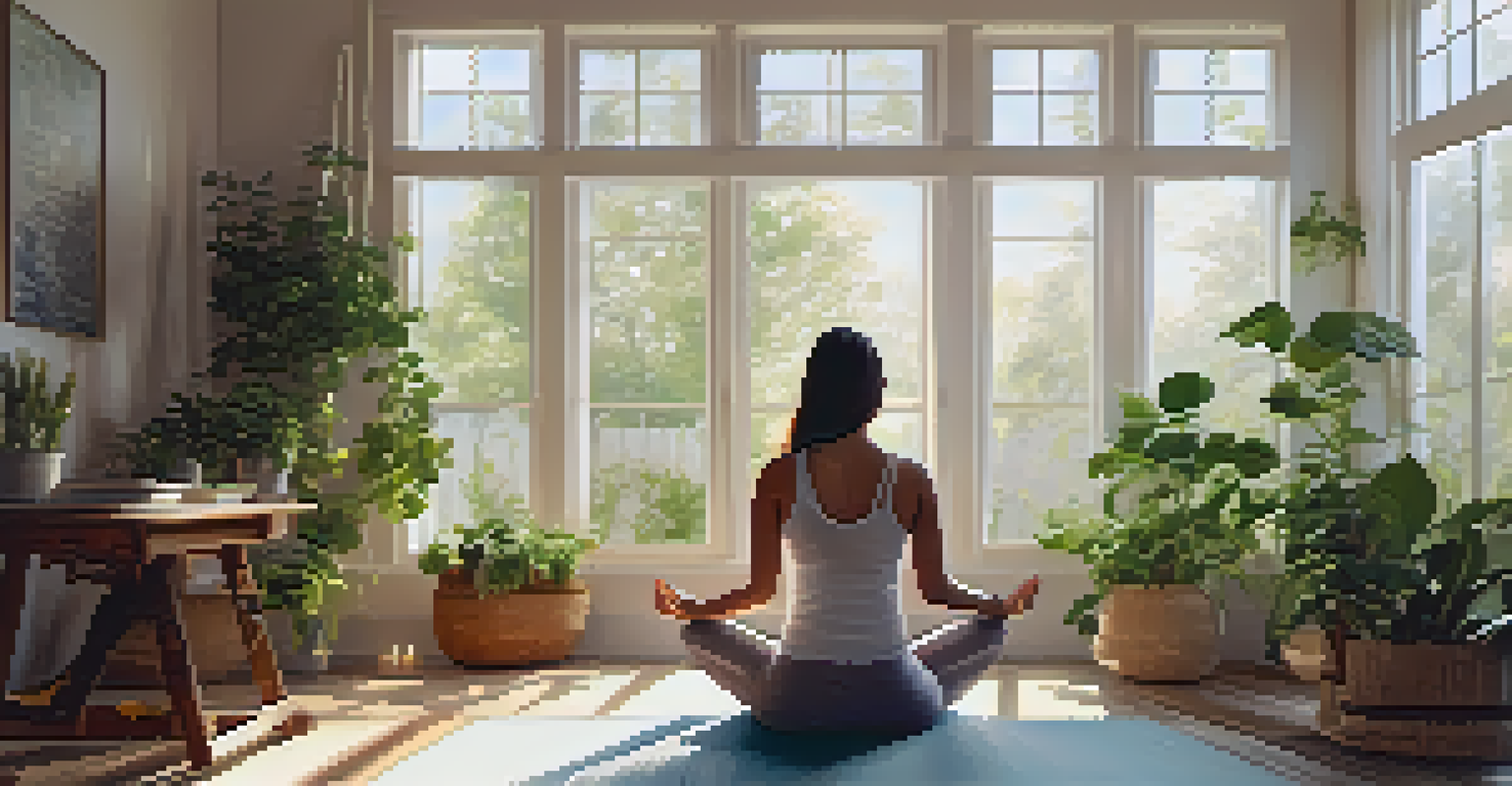The Importance of Self-Care in Managing Seasonal Affective Disorder

Understanding Seasonal Affective Disorder (SAD)
Seasonal Affective Disorder, often abbreviated as SAD, is a type of depression that occurs at certain times of the year, most commonly in winter. It can leave individuals feeling lethargic, moody, and disconnected. Understanding SAD is crucial in recognizing its impact on mental well-being and everyday life.
In the depth of winter, I finally learned that within me there lay an invincible summer.
The condition is believed to be linked to changes in light exposure, which affects our circadian rhythms and may lead to hormonal imbalances. As the days grow shorter and sunlight becomes scarce, those susceptible to SAD may find their mood plummeting. Recognizing these triggers is the first step toward effective management.
Many people experience mild symptoms, but for others, SAD can be debilitating. It's important to seek help and explore self-care strategies that can mitigate these symptoms and promote a healthier mindset during the darker months.
The Role of Self-Care in Managing SAD
Self-care is an essential tool in managing Seasonal Affective Disorder. It encompasses activities and practices that promote emotional, mental, and physical well-being. By incorporating self-care into your routine, you're not only addressing the symptoms of SAD but also fostering resilience against its effects.

Engaging in regular self-care can help you reconnect with your body and mind. Simple actions, like setting aside time for a relaxing bath or enjoying a favorite hobby, can create a positive routine that lifts your spirits. This proactive approach can make a significant difference in how one copes with the seasonal changes.
Self-Care is Key for Managing SAD
Incorporating self-care practices into your routine can significantly improve your mood and resilience against Seasonal Affective Disorder.
Moreover, self-care empowers individuals to take charge of their mental health. When you prioritize your needs, even small victories can lead to improved mood and overall well-being, making it easier to navigate the challenges posed by SAD.
Establishing a Daily Routine
A consistent daily routine is a powerful self-care strategy for managing SAD. Establishing a schedule that includes regular wake-up times, meals, and relaxation can provide a sense of stability. This predictability helps regulate your body's internal clock, which may be disrupted by seasonal changes.
Self-care is not a luxury. It's a necessity.
Incorporating activities you enjoy into your routine can also boost your mood. Whether it's a morning walk, reading a book, or practicing yoga, finding time for these activities can create a rhythm that combats the feelings of lethargy often associated with SAD. The key is to make these activities a non-negotiable part of your day.
Additionally, a structured routine can help reduce decision fatigue. When you know what to expect each day, it becomes easier to manage your time and energy, allowing you to focus on positive experiences rather than the weight of SAD.
Light Therapy: A Beacon of Hope
Light therapy is a widely recognized treatment for Seasonal Affective Disorder, mimicking natural sunlight exposure. This method involves sitting in front of a special light box that emits bright light, usually for about 20-30 minutes each day. Many individuals find that this simple practice can significantly improve their mood and energy levels.
The science behind light therapy is straightforward: it helps to regulate your body's production of melatonin and serotonin, hormones that play a key role in sleep and mood regulation. By providing your body with the light it craves during the darker months, you may experience fewer symptoms of SAD.
Light Therapy Boosts Mood
Using light therapy to mimic natural sunlight can help regulate hormones and alleviate symptoms of SAD.
Incorporating light therapy into your self-care routine is easy, and it can be done at home. Whether you choose to use a light box or spend more time outdoors when the sun is shining, this practice can be a vital component of your overall strategy for managing SAD.
Physical Activity: Move to Improve Mood
Regular physical activity is another essential aspect of self-care that can help manage SAD. Exercise releases endorphins, the body's natural mood lifters, which can be especially beneficial during the winter months. Even a short walk or a quick workout can boost your energy and enhance your mood.
Finding an enjoyable form of exercise is key. Whether it’s dancing, hiking, or joining a local sports team, engaging in physical activity that you love can make it feel less like a chore and more like a fun, uplifting experience. Aim for at least 30 minutes of activity most days of the week.
Additionally, exercising outdoors, when possible, not only combines physical activity with exposure to natural light but also connects you with nature. This blend can be incredibly refreshing and provides an added boost to your mental health, making it a win-win for those managing SAD.
Nutrition and Its Impact on Mood
What we eat can significantly impact our mood and energy levels, making nutrition a vital component of self-care during SAD. A balanced diet rich in fruits, vegetables, whole grains, and lean proteins can help stabilize blood sugar and support overall mental health. Certain nutrients, like omega-3 fatty acids and vitamin D, are particularly beneficial for mood regulation.
Incorporating foods that promote brain health, such as fatty fish, nuts, and seeds, can enhance your emotional resilience. Staying hydrated is equally important, as dehydration can lead to fatigue and irritability. Consider keeping a water bottle handy to encourage regular hydration.
Nutrition Affects Mental Health
A balanced diet rich in nutrients can stabilize energy levels and enhance emotional well-being during the winter months.
It's also helpful to limit sugar and processed foods, which can lead to energy crashes and mood swings. Instead, focus on nourishing your body with wholesome foods that provide sustained energy, helping you feel more balanced and better equipped to handle the challenges of SAD.
Building a Support System
Having a strong support system is essential when managing Seasonal Affective Disorder. Connecting with friends, family, or support groups can provide emotional support and remind you that you're not alone in your struggles. Sharing your experiences can help foster understanding and connection, which can be incredibly comforting.
Consider reaching out to others who also experience SAD or mental health challenges. Online forums and local support groups can be excellent resources for sharing coping strategies and encouragement. Sometimes, just knowing that others face similar struggles can alleviate feelings of isolation.

Additionally, don’t hesitate to seek professional help if needed. Therapists and counselors can offer guidance and coping techniques tailored to your unique situation, reinforcing your self-care efforts and providing valuable support during tough times.